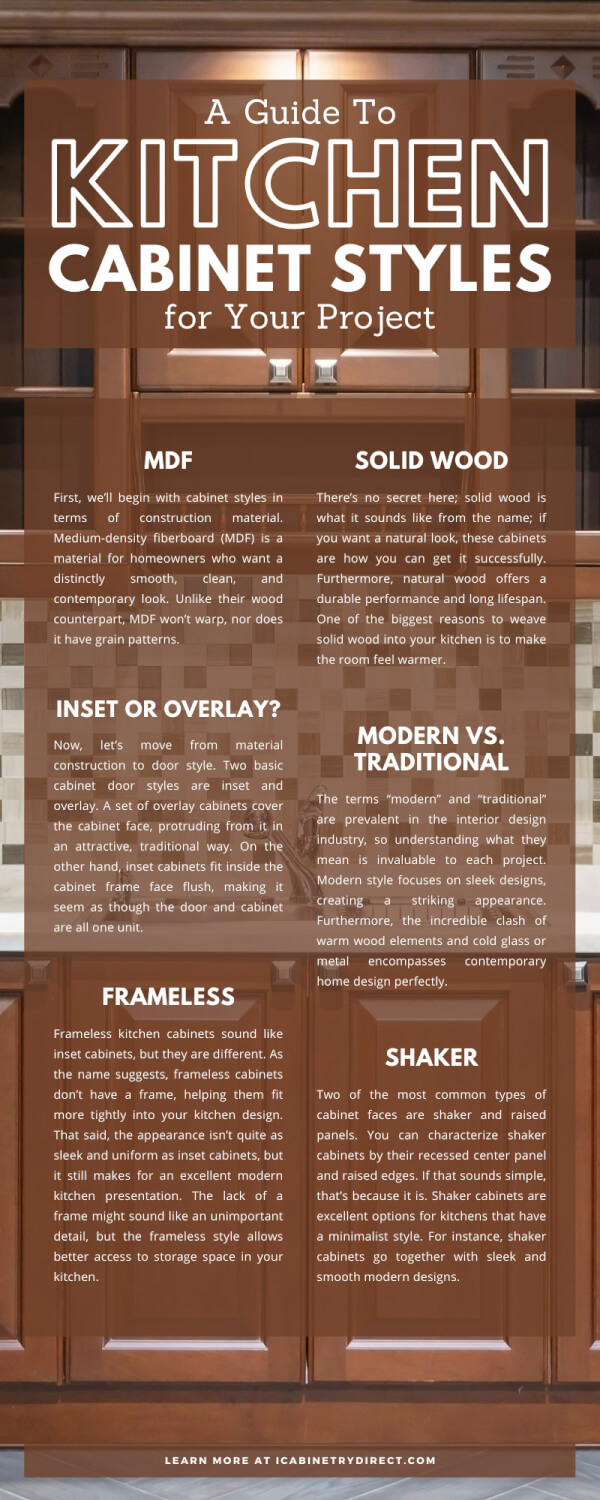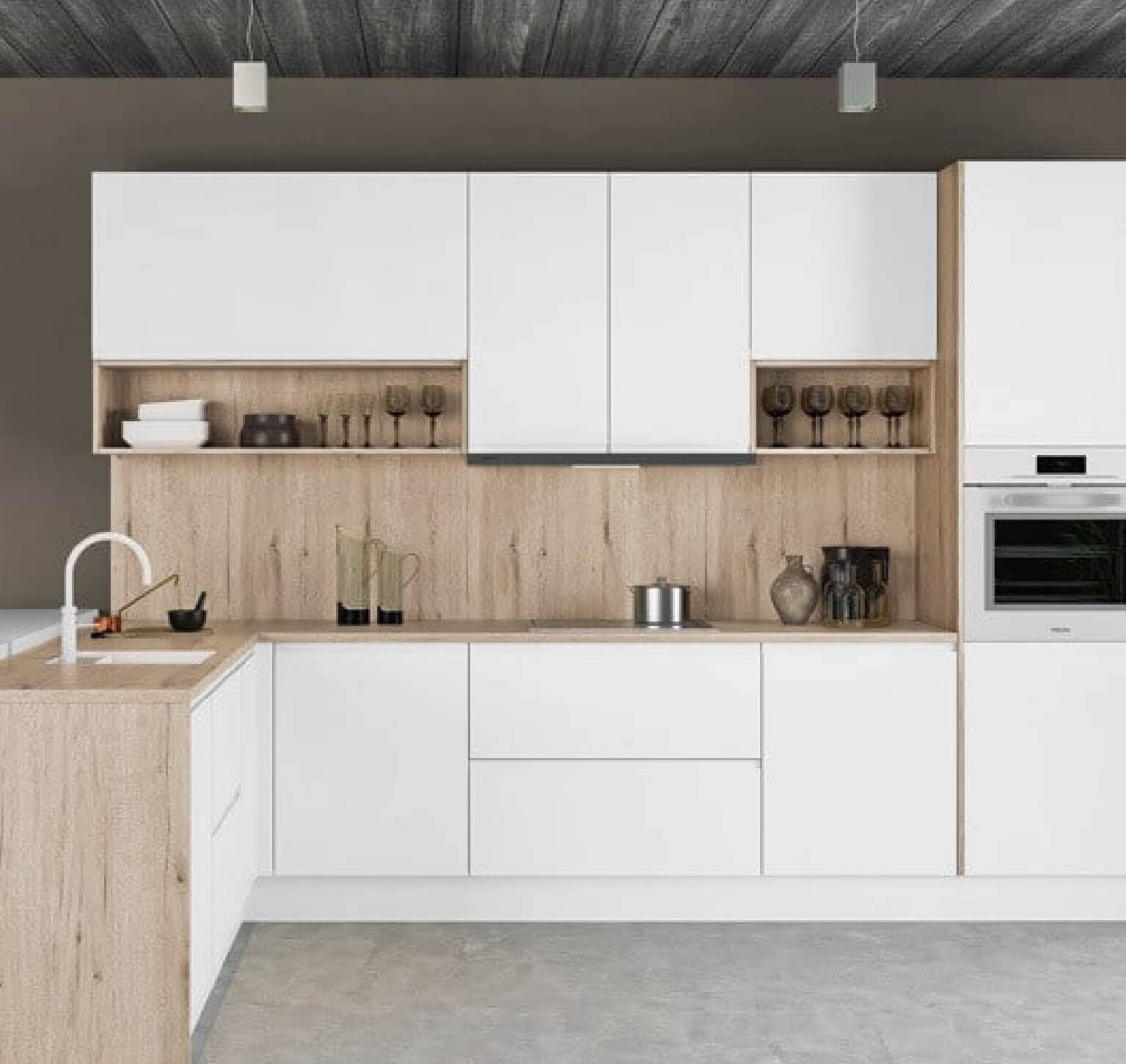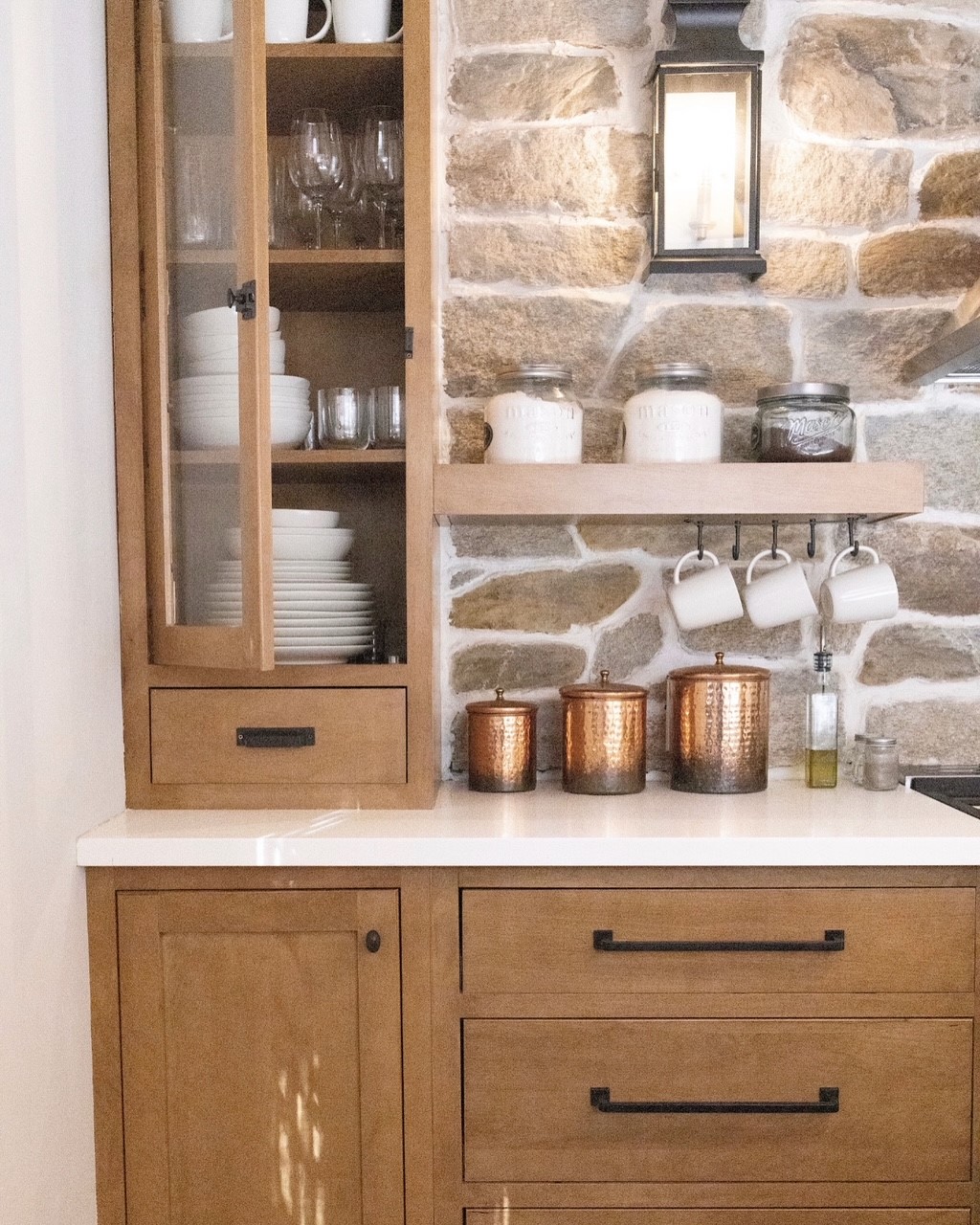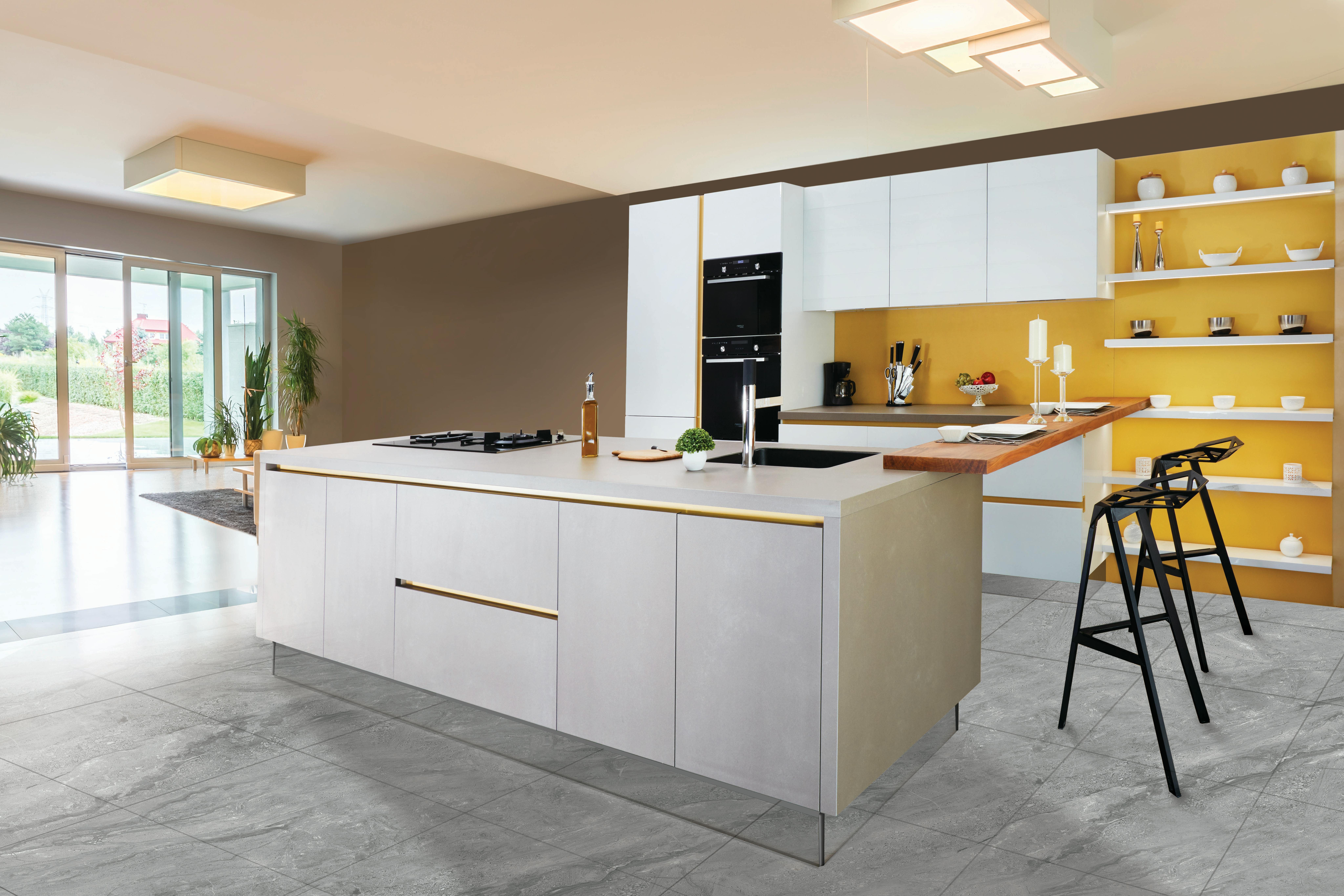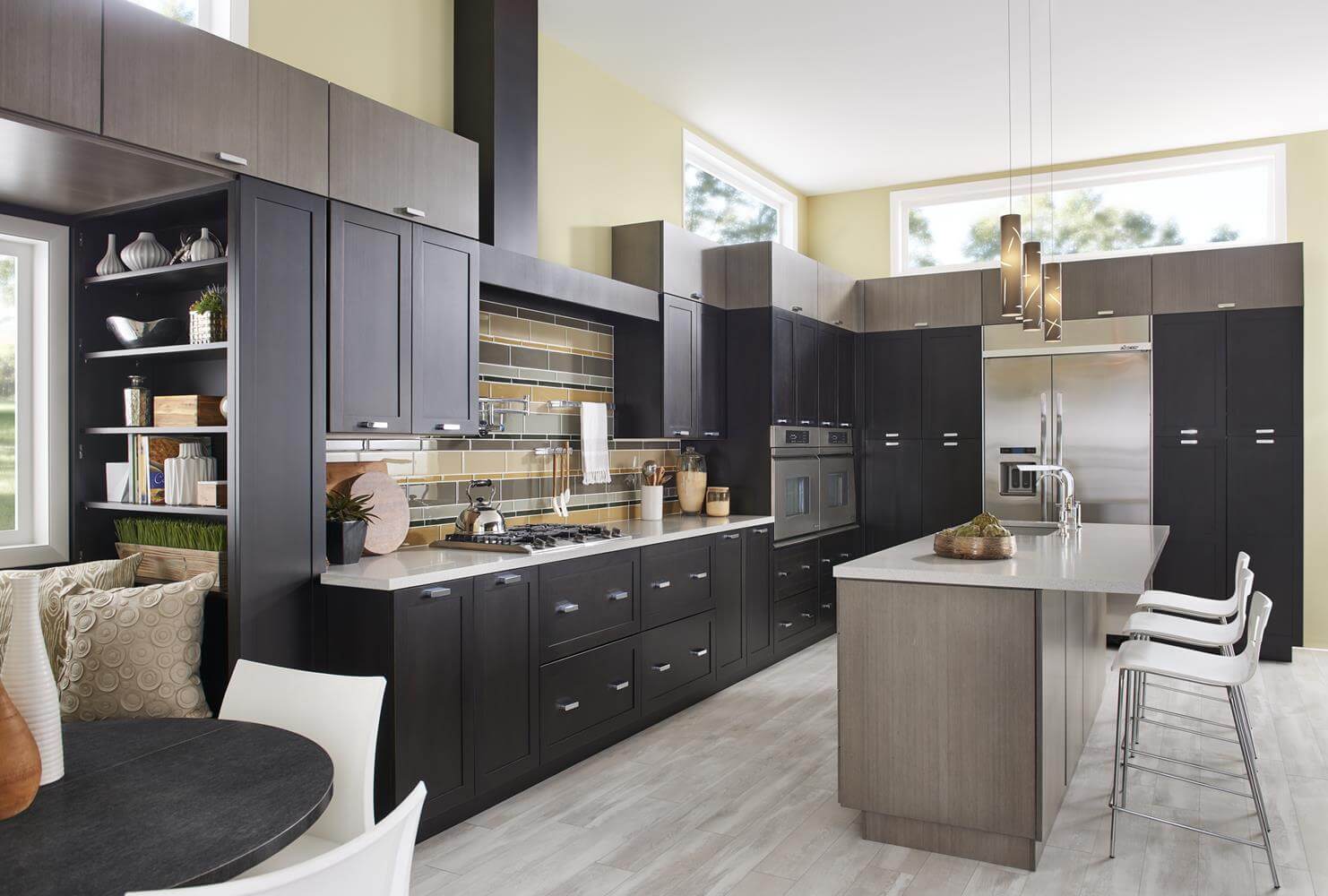To newcomers, buying kitchen cabinets probably sounds straightforward. You just go to the store, find a nice color and a low price, buy it, then move on, right? Unfortunately, it’s not quite that simple until you learn the essentials of what sets cabinets apart. The market isn’t full of cabinets for no reason; each set brings specific attributes that align with a wide array of kitchen design preferences. From the materials they contain to the way they fit into a frame, the little details in cabinet designs are what define them.
If you’re ready to learn the ropes, dive into this guide to kitchen cabinet styles for your project. After learning the ins and outs of kitchen cabinets, you’ll know how to beautifully tune the décor to your or your client’s style preference.
MDF
First, we’ll begin with cabinet styles in terms of construction material. Medium-density fiberboard (MDF) is a material for homeowners who want a distinctly smooth, clean, and contemporary look. Unlike their wood counterpart, MDF won’t warp, nor does it have grain patterns.
Although some homeowners love that distinct wood grain appearance, some prefer a less natural look to their kitchen. Plus, MDF’s big benefit over solid wood is its environmental protection. Don’t worry; solid wood cabinets don’t crumble after one water drop hits them.
However, warping can occur in wood cabinets due to intense temperature fluctuations and humidity. On the other hand, MDF contains three essential ingredients: wood fibers, resin, and wax. As a result, MDF has impressive stability and defense against environmental damages. But, of course, as you’ll learn below, solid wood isn’t without its benefits.
Solid Wood
There’s no secret here; solid wood is what it sounds like from the name; if you want a natural look, these cabinets are how you can get it successfully. Furthermore, natural wood offers a durable performance and long lifespan. One of the biggest reasons to weave solid wood into your kitchen is to make the room feel warmer.
Wood décor inherently brings a warm, welcoming feeling to interior design, which a kitchen atmosphere benefits from exponentially. Plus, although some homeowners don’t like or care about grain patterns, these patterns do add distinct character to décor. So, if the wood grain appearance catches your eye, these cabinets might be the perfect match for your home. In addition, wood materials are ideal for any traditional kitchen design, and cabinets are a stylish way to implement them into the overall décor.
Inset or Overlay?
Now, let’s move from material construction to door style. Two basic cabinet door styles are inset and overlay. A set of overlay cabinets cover the cabinet face, protruding from it in an attractive, traditional way. On the other hand, inset cabinets fit inside the cabinet frame face flush, making it seem as though the door and cabinet are all one unit.
In other words, it creates a sleeker appearance, whereas overlay-style cabinets are more present. One might say bulky, but that makes overlays sound obnoxious. Inset and overlay cabinets are both functional and beautiful; it comes down to what style you’re aiming for: modern or traditional.
Modern vs. Traditional
The terms “modern” and “traditional” are prevalent in the interior design industry, so understanding what they mean is invaluable to each project. Modern style focuses on sleek designs, creating a striking appearance. Furthermore, the incredible clash of warm wood elements and cold glass or metal encompasses contemporary home design perfectly.
When searching for modern kitchen cabinets for sale, the factors to look for are contrasting elements but sleek design above all else. Inset cabinets accomplish modern design because they lack a protruding door on the front. By seamlessly integrating the doors into their designated cabinet frame, inset cabinets perfectly capture that sleek quality.
On the other hand, traditional style focuses on classic architecture designs and building materials. Wood and brick are two prevalent materials in traditional décor. For instance, wood cabinets mix perfectly into such layouts. Whereas modern design is very minimalist, traditional style has a bit more visual complexity, though that doesn’t make the latter necessarily better. At the end of the day, it comes down to what’s right for your kitchen style.
Frameless
Frameless kitchen cabinets sound like inset cabinets, but they are different. As the name suggests, frameless cabinets don’t have a frame, helping them fit more tightly into your kitchen design. That said, the appearance isn’t quite as sleek and uniform as inset cabinets, but it still makes for an excellent modern kitchen presentation. The lack of a frame might sound like an unimportant detail, but the frameless style allows better access to storage space in your kitchen.
However, this doesn’t mean frames are the enemy of modern design. After all, inset cabinets need frames to function correctly. That said, the subtle design difference between frameless and inset cabinets is crucial for homeowners to think about before committing to one style.
Shaker
Two of the most common types of cabinet faces are shaker and raised panels. You can characterize shaker cabinets by their recessed center panel and raised edges. If that sounds simple, that’s because it is. Shaker cabinets are excellent options for kitchens that have a minimalist style. For instance, shaker cabinets go together with sleek and smooth modern designs. That said, wood shaker cabinets can weave beautifully into traditional kitchens, so don’t be afraid to experiment. So, if you want to imbue the kitchen with a classic style, shaker cabinets will help you meet that happy medium.
Raised Panel
Our guide to kitchen cabinet styles for your project concludes with one of the most intriguing options: raised panel doors. Like shaker doors, raised panel cabinets have a prominent border outlining the face. However, instead of a flat center, raised panels feature a central panel that stretches outward. As a result, raised panels bring more visual depth to the cabinets than shakers do.
Due to the intricate carving of raised panels, they are more eye-catching compared to simple, subtle cabinets that blend into the kitchen layout. Thanks to their decorative, elegant designs, raised panels are the perfect option for traditional kitchens. As you can see, there are many cabinet styles to consider; hopefully your decision is much clearer now.
